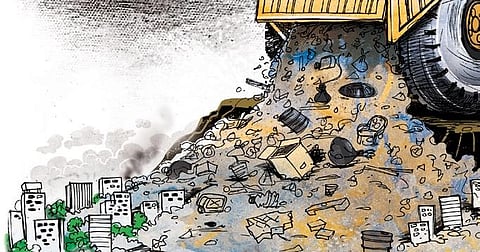

NEW DELHI: Over 500 billion plastic bags are used globally, which means one million bags are being used per minute. With 400 million tonnes of plastic produced every year worldwide, half of which is designed to be used only once and of that, less than 10 per cent is recycled. An estimated 23 million tonnes end up in lakes, rivers and seas annually.
This year, World Environment Day’s theme pertains to ‘solutions to plastic pollution’ with celebrations being hosted by Côte D’Ivoire - or the Ivory Coast in West Africa. This year also marks the 50th anniversary of World Environment Day. The United Nations Environment Programme had, in 1972, recommended June 5 as World Environment Day. India generates lesser plastic waste in comparison to the United States (US) and China. The per capita plastic consumption in the US is 139 kg, China 46 kg and in India, it is 15kg per year. Despite the lower per capita consumption, the government banned single-use plastic on July 1, 2022.
Not only plastic, earth’s environment is drastically affected by changes in air, water, climate, soil, natural vegetation and landforms. In 2021, Prime Minister Narendra Modi at the UN Climate Change Conference (UNFCCC COP 26) announced ‘Mission LiFE’- targeted to change individual behaviour towards the environment and to replace the prevalent ‘use-and-dispose’ economy with a circular economy.
The mission intends to nudge individuals to undertake simple acts in their daily lives that can contribute significantly to climate change. The United Nations Environment Programme (UNEP) has also echoed a similar idea. Even as India’s per capita carbon footprint is seven times lesser than the global average, this serious global environmental issue negatively impacts sustainable development’s environmental, social, economic and health dimensions. The latest Intergovernmental Panel on Climate Change (IPCC) Report it is an emergency situation and to keep global warming below 1.5°C this century, the annual greenhouse gas emissions must be halved by 2030.
Meanwhile, around one-third of India’s land (32%) is degraded and 25% is desertified. According to the United Nations, desertification is defined as land degradation in typically dry areas resulting from various factors, including climatic variations and human activities. Desertification has enormous implications for overcoming poverty in the affected areas. The degradation of ecosystems has a cascading effect on wildlife and the livelihoods of millions of natural resource-dependent people.